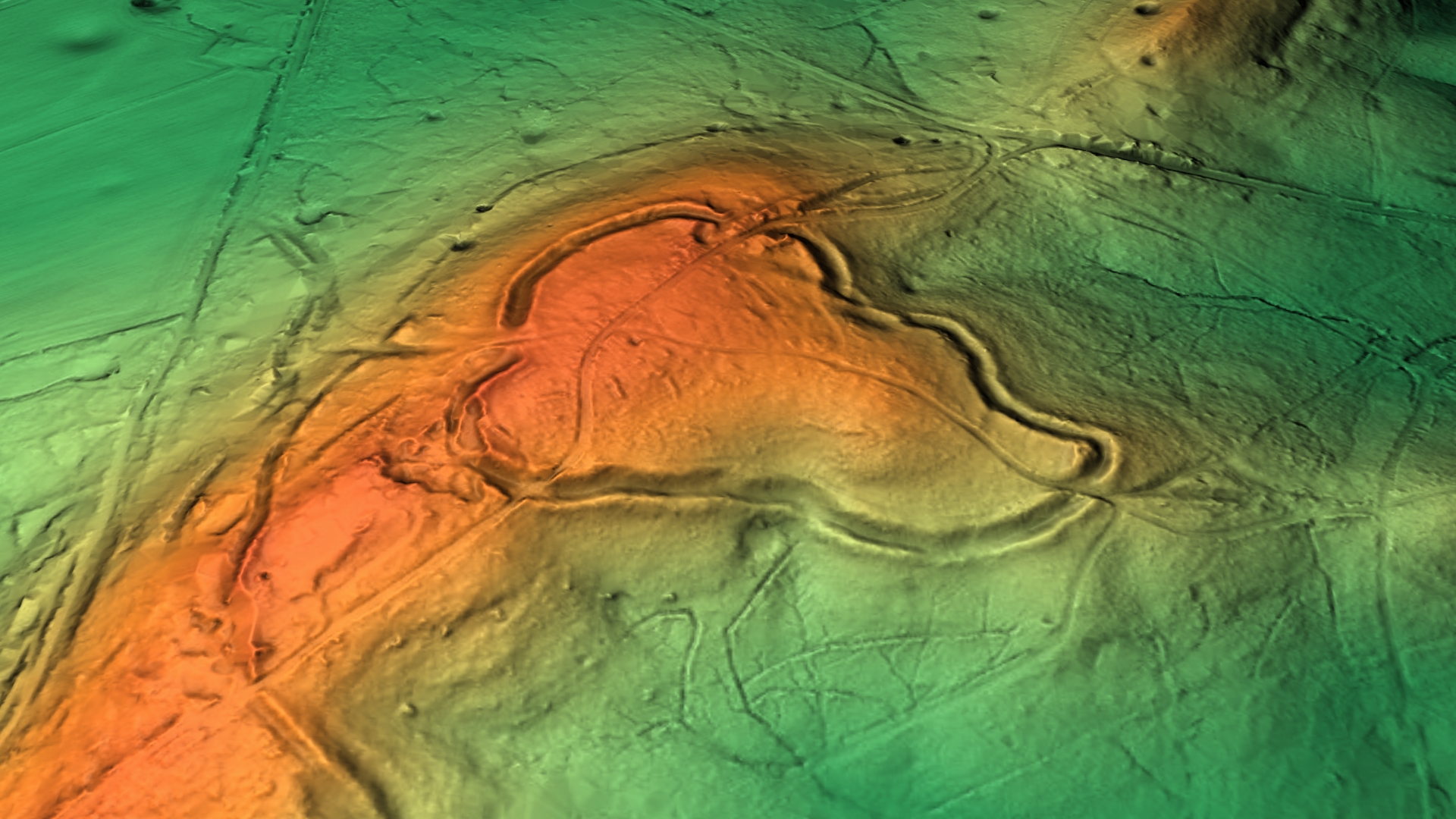Grimsbury Castle on:
[Wikipedia]
[Google]
[Amazon]
Grimsbury Castle is an
 The site benefits from a
The site benefits from a  Today the site is crossed by a small, single-track roadway.
Today the site is crossed by a small, single-track roadway.
Grimsbury Castle at the Digital Hillfort Project
{{Iron Age hillforts in England Hill forts in Berkshire West Berkshire District Iron Age sites in England
Iron Age
The Iron Age is the final epoch of the three-age division of the prehistory and protohistory of humanity. It was preceded by the Stone Age (Paleolithic, Mesolithic, Neolithic) and the Bronze Age (Chalcolithic). The concept has been mostly appl ...
"multiple enclosure" Hill Fort
A hillfort is a type of earthwork used as a fortified refuge or defended settlement, located to exploit a rise in elevation for defensive advantage. They are typically European and of the Bronze Age or Iron Age. Some were used in the post-Roma ...
comprising a large circular encampment situated on a high hill. It is situated within ''Grimsbury Wood'', between Cold Ash
Cold Ash is a village and civil parish in West Berkshire centred from Thatcham and northeast of Newbury.
Geography
The village of Cold Ash is situated at about above sea level, along the top of a ridge, marked by Hermitage Road and The Ridge ...
and Hermitage, in the county of Berkshire
Berkshire ( ; in the 17th century sometimes spelt phonetically as Barkeshire; abbreviated Berks.) is a historic county in South East England. One of the home counties, Berkshire was recognised by Queen Elizabeth II as the Royal County of Berk ...
.
History
 The site benefits from a
The site benefits from a natural spring
A spring is a point of exit at which groundwater from an aquifer flows out on top of Earth's crust (pedosphere) and becomes surface water. It is a component of the hydrosphere. Springs have long been important for humans as a source of fresh w ...
which reportedly has never been known to run dry. The entrenchment would appear to have been extended on the south side of the hill for the purpose of enclosing this spring. This rampart
Rampart may refer to:
* Rampart (fortification), a defensive wall or bank around a castle, fort or settlement
Rampart may also refer to:
* "O'er the Ramparts We Watched" is a key line from "The Star-Spangled Banner", the national anthem of the ...
appears to have had only two entrances, one on the north and the other on the south side; just within the entrenchment, at the entrance on the north, is a small tumulus
A tumulus (plural tumuli) is a mound of earth and stones raised over a grave or graves. Tumuli are also known as barrows, burial mounds or ''kurgans'', and may be found throughout much of the world. A cairn, which is a mound of stones buil ...
, which may have been constructed as a mount for observation or defense, or for the purpose of interment.
The name shows that the later Saxon
The Saxons ( la, Saxones, german: Sachsen, ang, Seaxan, osx, Sahson, nds, Sassen, nl, Saksen) were a group of Germanic
*
*
*
*
peoples whose name was given in the early Middle Ages to a large country (Old Saxony, la, Saxonia) near the Nor ...
settlers in the region found the earthworks
Earthworks may refer to:
Construction
*Earthworks (archaeology), human-made constructions that modify the land contour
* Earthworks (engineering), civil engineering works created by moving or processing quantities of soil
*Earthworks (military), m ...
so impressive that they thought they must have been built by the chief of their gods, Woden alias Grim.
The site lies at an elevation of 155m AOD. There is an 18th-century folly
In architecture, a folly is a building constructed primarily for decoration, but suggesting through its appearance some other purpose, or of such extravagant appearance that it transcends the range of usual garden buildings.
Eighteenth-cent ...
on the site, also known as ''Grimsbury Castle''.
 Today the site is crossed by a small, single-track roadway.
Today the site is crossed by a small, single-track roadway.
References
External links
Grimsbury Castle at the Digital Hillfort Project
{{Iron Age hillforts in England Hill forts in Berkshire West Berkshire District Iron Age sites in England